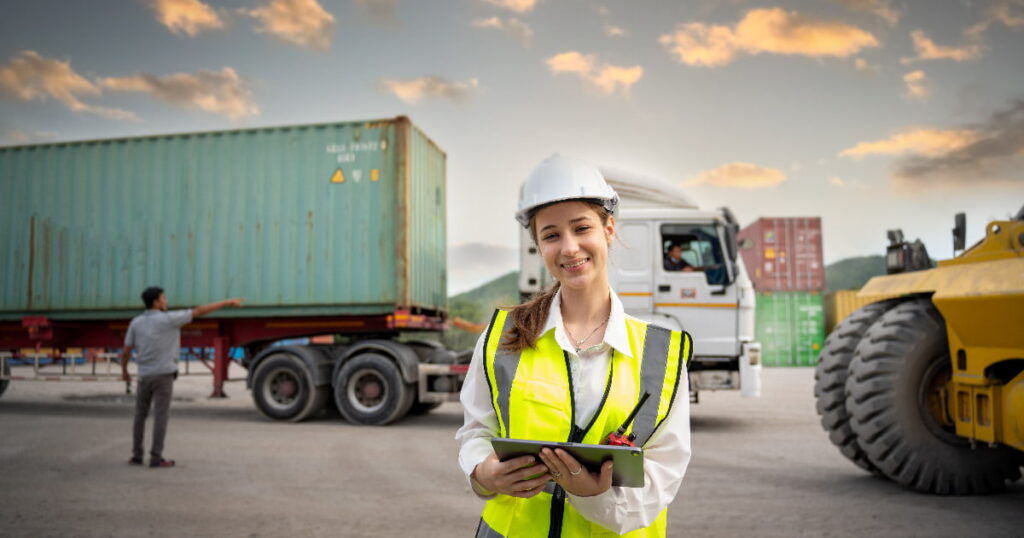A1 Quality Logistical Solutions
Key Highlights
- Carrier liability determines the responsibility of logistics providers for freight loss or damage during transportation services.
- U.S. regulations like the Carmack Amendment shape the legal framework for carrier liability within supply chain operations.
- Shippers can encounter various liability types: full, limited, and released value, each affecting order fulfillment and cost savings.
- Exceptions to carrier liability include acts of God, public authority, inherent vice, or shipper negligence.
- Understanding liability limits and choosing supplemental cargo insurance ensures better protection for your shipment.
Introduction
Efficient supply chain management depends on good logistics providers to move goods in a safe way and keep shipping costs low. But sometimes, goods can get lost or damaged while being shipped. When this happens, carrier liability is important because it helps make sure someone is accountable. This idea includes legal duties, different types of coverage, and how much the carrier has to pay. So, it is very important for shippers to know these things. By learning the key facts about carrier liability, you can better handle your logistics operations and protect your inventory management.
Understanding Carrier Liability in Shipping
Carrier liability is a key idea that shapes transportation services and the way customer service works. When people send goods using logistics providers, there are rules to show who is to blame if things get lost or broken during the trip. These rules help solve problems and keep trust strong in the logistics industry.
To protect your supply chain and keep business running well, you need to know how this liability works. By looking at what is covered by the agreement and what is not, you will be ready for any bumps in the road. Knowing about carrier liability helps you have smooth supply chain operations and can also make working with logistics providers easier. So, what does carrier liability really mean?
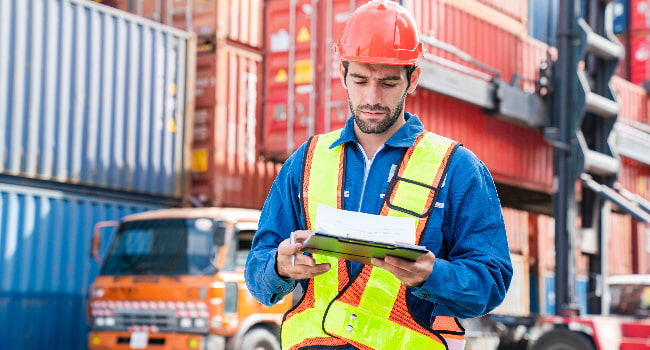
What Is Carrier Liability?
Carrier liability is about who is responsible for goods when they are moved from one place to another. The service provider has to make sure there is no damage, loss, or delay that could get in the way of order fulfillment. For example, if someone is moving fragile products, there need to be clear rules so that the right steps are taken to keep them safe.
Logistics services work under set rules that come from contracts or laws. These rules say what each side has to do. The level of liability is not always the same. It depends on things like what kind of cargo is being moved and what risks are involved. Shippers should know the level of protection they will get before they pick their logistics providers.
Having good carrier liability makes shipping logistics run well. This helps shippers and transporters trust each other and solve problems that can come up. When both sides know who is responsible, they can make better decisions when it is time to make a deal. This is key in setting up legal rules about liability, especially in the United States.
The Legal Basis for Carrier Liability in the U.S.
In the United States, carrier liability is covered by laws that say what a service provider has to do. There are rules, like the Carmack Amendment, that make it clear what is expected during supply chain operations. For example, they explain what happens if there is cargo damage or loss that no one saw coming.
When people use transportation services, there can be many risks. So, there need to be rules to say who is responsible for what. Shippers can see the coverage limits. This helps them know what the logistics provider must do if there is a problem. It also helps stop arguments and makes the supply chain work better for all kinds of businesses.
With these set laws, both owners of businesses and logistics companies know what to expect. The laws help protect the things people own and make sure everyone is following the law in the logistics industry. Next, let’s look at the types of carrier liability that set the standard for the whole supply chain and logistics industry.
Types of Carrier Liability (Full, Limited, Released Value)
Different types of carrier liability can affect the way shipping works and how happy customers are. Full liability means the carrier takes on all the risk. They must pay for any loss or damage to the goods, so this way is good for items that are worth a lot. Limited liability means the carrier only has to pay up to a set amount if things go wrong. This helps to keep shipping costs lower, but may not be enough protection for valuable shipments. Released value liability lets the sender say the goods are worth less. This keeps costs low for the carrier and leads to lower shipping costs for the sender, but if there is loss or damage, the compensation is only a small amount.
Key Laws Governing Carrier Liability
Several laws shape the way logistics companies and carriers deal with who is responsible in the supply chain. The Carmack Amendment gives a simple way to judge damage claims. This helps both shippers and service providers solve problems faster.
Also, there are more rules. These legal rules make sure that carriers stay safe and do what the law says in logistics operations. These laws help protect shippers from losing money, so transportation management goes more smoothly. The Carmack Amendment, in particular, is very important. It leads both company policies and business choices in the supply chain.
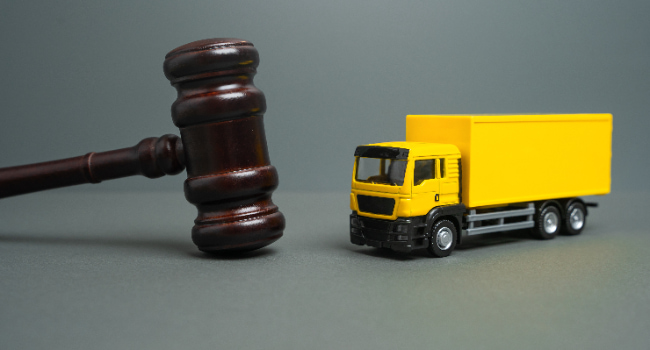
Carmack Amendment and Its Impact
The Carmack Amendment is key when it comes to carrier liability in supply chain visibility. This law makes it easy for shippers to file claims if their goods get damaged or lost during transit. It also sets a single standard in the U.S., so every business follows the same rules and business model.
When it comes to logistics operations, the Carmack Amendment helps shippers and carriers check who is responsible once goods leave for delivery. Service providers get a clear set of rules. This makes it easier for businesses to protect their goods and people can trust the system more. Because of this, e-commerce can grow as customers feel more confident.
The Carmack Amendment is at the heart of important rules that keep U.S. supply chain logistics running well. It fills in the gaps when it comes to who pays for damages, making shipping and working together cheaper. On top of that, groups like FMCSA watch over shipping and add more policies to help everyone involved in supply chain visibility and logistics operations.
Role of Federal Motor Carrier Safety Administration (FMCSA)
Keeping an eye on commercial transportation is very important for safety in the logistics industry. The Federal Motor Carrier Safety Administration (FMCSA) sets rules that carriers have to follow. This helps keep the level of service high. The FMCSA puts safety rules in place and also watches how well carriers do their jobs. By doing this, it improves supply chain operations and looks after customer needs. The FMCSA’s work tries to cut down on accidents and also helps make transportation services more reliable and efficient. In the end, this creates a safer shipping space for everyone involved in the supply chain.
Bill of Lading and Liability Terms
The Bill of Ladin the main document in shipping. It lists the rules for who is responsible during transportation services. The Bill of Lading works as both a receipt and a contract. It explains how the goods should be handled in warehouse operations and during the trip.
This document helps make the rules of who is responsible clear between the person shipping something and logistics companies. For example, it covers the value of the goods, where they need to go, and what the carrier must do to cut down risks. No matter if the goods are for farms or online stores, the setup of the Bill helps people follow the rules.
Logistics companies use the Bill of Lading to keep their logistics operations running the same way every time. Taking care of this paperwork helps grow customer satisfaction. It also makes workflows better. The rules about who takes responsibility—the carrier or another person—can even change how shipments get planned, as we will talk about next.
Common Carrier vs. Contract Carrier Liability
Common carriers and contract carriers are not the same when it comes to how much risk they take in supply chain management. A common carrier works with many clients. It usually has set rules for what losses it will take on. These rules let it cover more people and let them have more options.
On the other hand, contract carriers set their own risk rules for each business they work with. They work out special deals for their supply chain clients. This gives a supply chain many benefits that match what each client needs. Cost savings are often easy to spot here. But since each kind takes care of risk and shipping in its own way, there is a big effect on how logistics providers work.

Differences in Responsibility and Coverage
Responsibilities vary between common carriers and contract carriers in logistics providers’ liability. Common carriers accept goods for transportation regardless of client specifics, defining universal coverage standards.
Carrier Type | Coverage Characteristics |
Common Carrier | Broader coverage but less personalised liability terms for order fulfillment. |
Contract Carrier | Tailored liability based on shipping strategy and pre-agreed contracts. |
Shippers may opt contracts for improved customer experience or stipulate enhanced logistics services. Evaluating such liabilities leads into timing considerations for inventory management.
When Does Liability Begin and End?
Carrier liability starts when the goods are brought into the transportation services network. It ends when the goods reach their delivery point. There can be changes in timing, which depends on the type of shipment and how it fits in the supply chain or supply chain management. For example, warehousing can make the liability period longer. During storage, carriers and other people in the process may take turns being responsible.
When businesses are clear about these timelines, it makes inventory management much easier. You get better transparency in logistics operations. Shippers help with this, as they set up points when and where liability covers the goods. This helps everything in the fulfillment process go smoothly. Also, companies should look into and know how carriers try to keep liability costs low and how it may affect their supply chain.
How Carriers Limit Their Liability
Carriers use different ways to lower their risk when working in the supply chain. They often have contracts with limited liability parts. This helps them not lose as much money if something goes wrong during transport. Many logistics providers also use a “released value” method. Here, shippers can say their goods are worth less, so they can save on shipping costs. Carriers also make sure their terms of service are strict and talk clearly with their customers. This makes the contract talks simple and open. These steps help protect the carrier. They also make supply chain operations smoother. In the end, this leads to better order fulfillment and higher customer satisfaction.
Exceptions to Carrier Liability
There can be times when carriers are not held responsible for damaged goods. These situations can affect order fulfillment and the whole supply chain. Natural disasters, often called “acts of God,” can break the flow of goods and make it hard for people to claim damage. Sometimes actions by the government or changes made by public groups can stop carriers from being blamed. If there is a problem caused by the shipper, like poor packaging or not labeling the goods right, carriers might not have to take the blame either. There is also the case where the goods themselves are weak or have a problem that can cause damage over time. Knowing about these exceptions is important for anyone working in logistics operations and when managing claims.
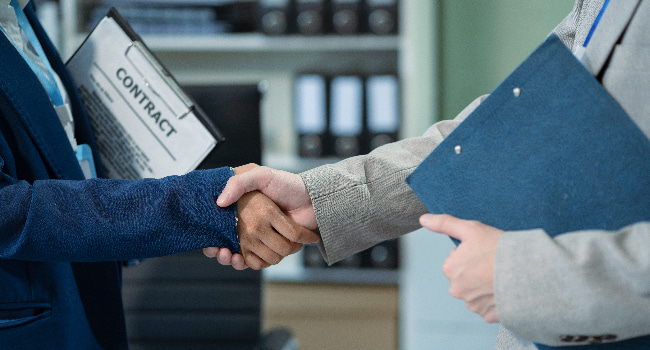
Acts of God (Natural Disasters)
Unpredictable things, like storms or earthquakes, can have a big effect on carrier duties. This is a problem for people who work in logistics and for shippers. When there is a hurricane, earthquake, or flood, the rule called force majeure takes place. This means the carrier may not have to be responsible for things that are out of their hands. This can make supply chain operations more difficult. It also means that order fulfillment and delivery can be delayed.
To stop large losses from these sudden events, shippers need to be ready. They should come up with good ways to handle risks, like using different transportation services and always keeping supply chain visibility. This can help them keep up with changes in the supply chain, even when things go wrong.
Acts of Public Authority
Government steps can have a big effect on what a carrier must do, especially when rules or orders from public groups slow down logistics operations. For example, if the government orders road closures or quarantine steps, the carriers may not be at fault if goods are lost or damaged. In these cases, the responsibility goes from the carrier to the government, and this touches the whole supply chain. When you understand this, your business can get ready for possible problems and keep greater customer satisfaction with your logistics operations. This makes it easier to make customers happy, even when things go wrong.
Shipper’s Fault or Negligence
Liability can change if there is a problem because of a shipper’s mistake or careless action. This happens a lot when things are not packed right, labels are wrong, or paperwork is missing or not correct. These careless actions can make the whole logistics process harder. They can also hurt the way a company handles inventory management and order fulfillment. It is important for people to know their part in the supply chain to keep risks low. By knowing about the possible problems and making sure they follow the best ways to do things, shippers can keep themselves safer. This also helps make logistics operations easier and better. In the end, when all these things come together, it helps improve customer satisfaction.
Inherent Vice in Goods
Some items have qualities that can cause them to get damaged, no matter how you ship them. This is called “inherent vice.” It means there are things built into the product that can make it break down when moved. For example, soft fabrics or goods that can spoil may get ruined even when handled the right way. It is important for shippers to know about this. It helps them understand who is responsible if something goes wrong. When you know about the nature of what you are sending, you can make better choices about your supply chain. This helps you deal with supply chain operations and know what to expect from logistics services.
Steps to Determine Carrier Liability After Damage or Loss
When you have damage or loss, the first step is to check the cargo carefully and write down what you see. Take photos and make notes, because this helps show what really happened. You need this information to back up your claim. After that, file a claim with the carrier. Make sure you send in all the evidence and do it on time. This helps your case. If you know your shipping strategy well and work closely with logistics providers, you can be ready if anything goes wrong. These steps help you get better decisions and customer satisfaction for next time you ship something.
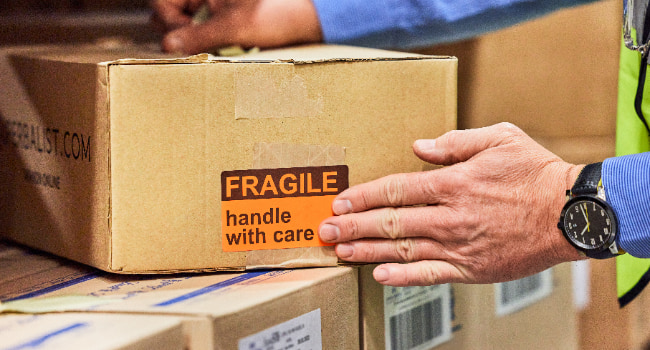
Inspection and Documentation
Careful checks and clear records play a big part in keeping carrier responsibility in the supply chain. Before you load anything, it is important to look at the goods to see what shape they are in. This way, all people involved know what to expect. It helps avoid problems or arguments during the fulfillment process. When you have a set plan to note any old damages or problems, it makes inventory management easier and also helps show what is going on in your supply chain. Good records, like photos and shipping receipts, can help you when you need to talk to the carrier about damages or missing items. Doing these steps helps business owners make good choices and makes the customer experience better in the end.
Filing a Claim Against the Carrier
Filing a claim with the carrier needs a clear step-by-step process to make sure you deal with damages properly. Start by collecting all the needed papers. This includes shipping slips and photos of the damaged items. It is very important to keep careful records for a good claim. Next, send your claim to the carrier as soon as you can. Make sure to check the carrier’s rules, as they may have time limits for claims. Good and timely talk with the service provider helps a lot in your logistics operations. Be sure to give clear proof of the damage. This makes it more likely that you will get an answer and get your money back, so your interests stay safe.
Time Limits and Required Evidence
Setting the right time limits and getting the needed proof is key in shipping logistics. Most carriers set a set time to file claims. You can often find this in their terms of service. The time can be just a few days or it can stretch to some months after something happens with the shipped goods.
To help with order fulfillment, you should keep documents like delivery receipts, pictures of damaged goods, and a full report of what happened. These things help see who should be responsible. They also help logistics providers act fast. This keeps customer satisfaction high and helps supply chain operations keep running well in the long run.
Carrier Liability Limits and Valuation Methods
Knowing about the limits of carrier liability and valuation ways is important, so shippers can protect what is theirs. There are different ways to set value, like per pound or per shipment. These ways affect how much money shippers get if their stuff is lost or broken. When shippers use declared value options, they can say what their cargo is worth. This changes the limit for what the carrier will be responsible for. Also, using released value protection can help reduce losses. But people need to think about the trade-offs. You want to save on costs, but you also need to make sure there is enough coverage. Cost savings are good, but don’t forget about having enough protection.
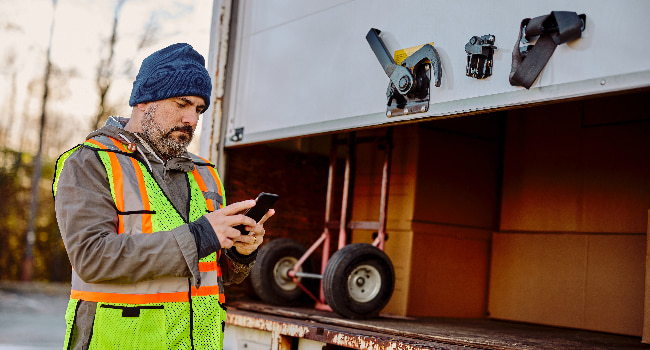
Per Pound vs. Per Shipment Valuation
Valuation methods can really change how carrier liabilities are calculated. When the per pound valuation is used, the focus is usually on the shipment’s weight. This is often done to keep things simple and quick, rather than thinking about its true value. On the other hand, per shipment valuation looks at the full value of what is being shipped. This method can give a better idea of what could be lost if something happens during shipping. The difference between these two ways of valuing a shipment matters a lot in logistics operations. It helps shipping providers handle risk and manage costs in their work. Knowing how each method works can also help ecommerce businesses pick the right shipping strategy and get good coverage to protect their goods.
Declared Value and Additional Coverage
Deciding the declared value of goods when you ship them is important. It helps to lower the risks with how much carriers are responsible for. This value should show the actual worth of what you are sending. You can often buy extra coverage for more protection. Talking with logistics providers gives you solutions that fit you. This way, your shipping costs can meet both your budget and security needs. Using these choices will keep customer orders safe. It also helps make supply chain management better and improves customer satisfaction. The supply chain works better for everyone when you plan for these things.
Understanding Released Value Protection
Released value protection is an important part of carrier liability. It lets a business owner set a set value for their goods if they get lost or damaged. This helps get cost savings because the carrier does not have to pay as much for insurance, so they take on less money risk for the shipment. But with released value protection, there is less coverage. It is often just a small amount paid for each pound. There is a need to weigh cost and how much coverage there will be, as this can really change the way supply chain management works. It can also affect logistics services and the customer experience. Every business owner should understand these limits when dealing with fulfillment in the supply chain.
How Shippers Can Protect Their Interests
Picking the right level of liability coverage is key for shippers who want to protect what they have. To know the main points about released value protection and extra coverage can really help manage risk better in the logistics industry. Plus, using more cargo insurance helps protect against things that can go wrong. This steps up inventory management and keeps it steady. When you follow good ways for packaging and labeling, not only does it help the fulfillment process, but it also lifts customer satisfaction. By taking action early with the right shipping strategy, businesses can lower the chance of loss and keep supply chain operations in good shape.
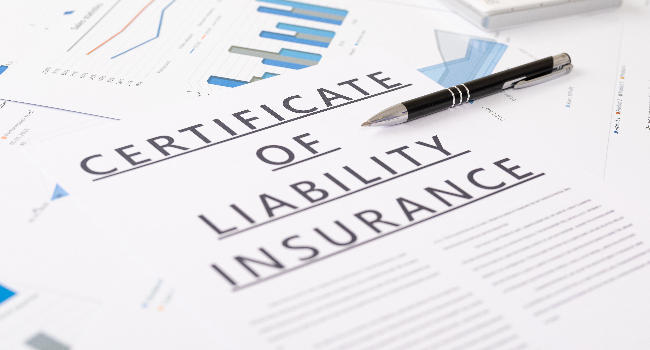
Choosing the Right Level of Liability Coverage
Choosing the right amount of liability coverage is very important to cut down risks in logistics services. There are different types to pick from, such as full, limited, and released value coverage. Each one works well for certain shipping styles and budgets. If you understand these types well, you will make better decisions about the risk of loss. It can also be good to think about your order volumes and product categories. Doing this helps you find cost savings. In the end, when you match your coverage with your own supply chain operations, you help improve customer satisfaction. You also keep your interests safer from problems you did not see coming in the supply chain. This way, your work in logistics services is stronger, and your customers are happier.
Supplemental Cargo Insurance Options
Supplemental cargo insurance options give shippers more protection than what carriers usually offer. This extra insurance helps fill gaps that might be missing from normal coverage. It can be useful for shipping high-value or fragile items. When you work with logistics providers and freight forwarders, you can pick a plan that matches your shipping strategy and how much risk you want to take. Choosing good logistics companies can help you make better decisions about insurance. This makes sure your goods are safe and the supply chain stays strong. It also means your business is more protected with every shipment, making your supply chain operations run smoother.
Best Practices for Packaging and Labeling
Good packaging and labeling help improve logistics operations. When you pack products well, they are less likely to get damaged while being shipped. This makes order fulfillment more accurate. It is important to use strong materials that can keep products safe, but you should also think about the weight. Keeping packages light can help lower shipping costs.
Clear labels with barcodes are helpful. They make it easier to see where products are in the supply chain and make inventory management go more smoothly. Adding product details and how to handle them on the package helps, too. This keeps customers happy and supports the whole fulfillment process.
When you focus on these steps, you make your shipping strategy better. You also give your customers a better experience, which is good for both you and them. These practices lead to supply chain visibility, customer satisfaction, and lower shipping costs.
Real-World Scenarios and Case Studies
Looking at real-life cases can help you learn more about what carriers may be responsible for in the logistics industry. For example, there was a situation where goods got damaged while being moved. This showed how important it is to have good paperwork and to check the shipments. Doing this as part of the fulfillment process can make it much easier when there are claims to make. In another example, an online store had a loss because bad weather caused delays. This showed what can happen when “acts of God” occur.
These stories help people understand the parts of shipping logistics that can be hard. They also show why strong risk management skills are needed in supply chain operations and throughout the whole supply chain.
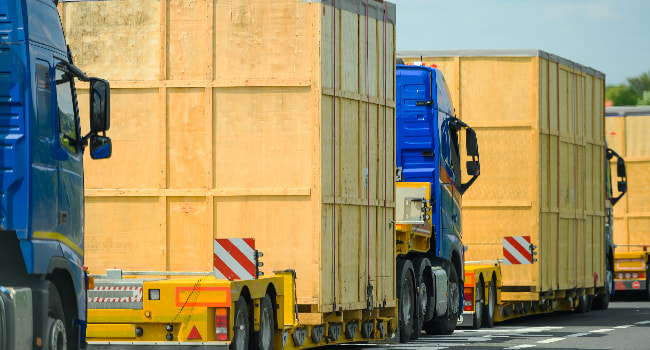
Common Claims Examples
In the logistics industry, there are many common claims that show how complex carrier liabilities can be. For example, if a shipment gets damaged because of poor packaging, it can cause fights over who is at fault. Loss of cargo due to theft or things like storms can also bring claims against the carrier. Shippers can face problems when there are defective shipments. These can hurt the customer experience and need good records to back up any claims. Knowing about these types of cases is important for any business. This helps to improve their shipping strategy. It also makes the fulfillment process better and helps to get maximum efficiency.
Lessons Learned from Recent Carrier Liability Cases
Recent cases about carrier liability give us some helpful ideas on how to manage risk in the logistics industry. One key lesson is that clear talks about who has what liability coverage can help reduce problems between service providers and shippers. Another important point is that having strong ways to keep records makes it easier to handle claims and helps improve supply chain visibility. Businesses also need to see how new technology can help track cargo. This leads to faster answers for problems and better customer satisfaction. By learning from these cases, companies can make the fulfillment process smoother and protect the interests of everyone in their supply chain.
Conclusion
It is very important for shippers to understand the rules about carrier liabilities to get the best results in their logistics operations. If you know about the exceptions to liability and you take steps like picking the right type of coverage and buying extra insurance, you can improve your supply chain management. When you stay up to date with the industry and see what changes are happening, you can lower many risks, especially ones that deal with damaged goods. In the end, having a smart shipping strategy helps you do better with order fulfillment. This also gives your customers a better experience and can raise customer satisfaction. By doing this, ecommerce brands can build strong supply chains and work towards more success.
Frequently Asked Questions
What is the difference between carrier liability and cargo insurance?
Carrier liability means a carrier is legally responsible if your cargo gets lost or damaged. Cargo insurance gives extra money protection in case these things happen. Knowing about carrier liability and cargo insurance helps shippers lower risks and make sure they have enough protection when their goods are being moved.
How much compensation can I expect for a damaged shipment?
Compensation for a damaged shipment will usually depend on the carrier’s liability limits and the value that has been declared for the goods. The type of coverage you buy, how bad the damage is, and the documents you give are also things that affect how much you get paid in the end.
What should I do immediately if my goods are damaged in transit?
Check the goods right away for any damage. Take photos of everything to show what happened. Tell the carrier and your insurance company as soon as you can. Keep every receipt from the shipment safe. File a claim quickly and make sure to meet any deadline the carrier gives you.
Can I negotiate higher liability limits with a carrier?
Yes, you can ask your carrier for higher liability limits. Shippers can talk about their own needs and the risks involved with the cargo. This may help you get a plan that covers more. You should know that better coverage costs more. You will need to pay extra for higher liability protection.
What documents are required to file a carrier liability claim?
To file a carrier liability claim, you will need a few things. The key documents are the bill of lading, delivery receipt, and photos of any damaged goods. Any letters or emails about the claim are also important. Make sure to gather all these items. This will make the claims process go better and help you get the money you deserve.

Haley serves as the Marketing Manager for A1 Quality Logistical Solutions. She joined A1QLS in 2023 with her prior experience gained with GXO and XPO Logistics.

